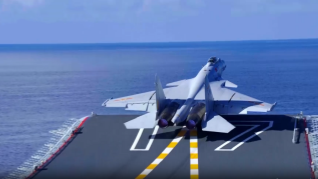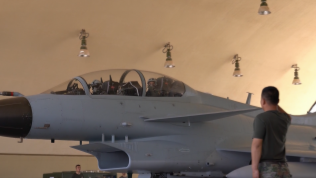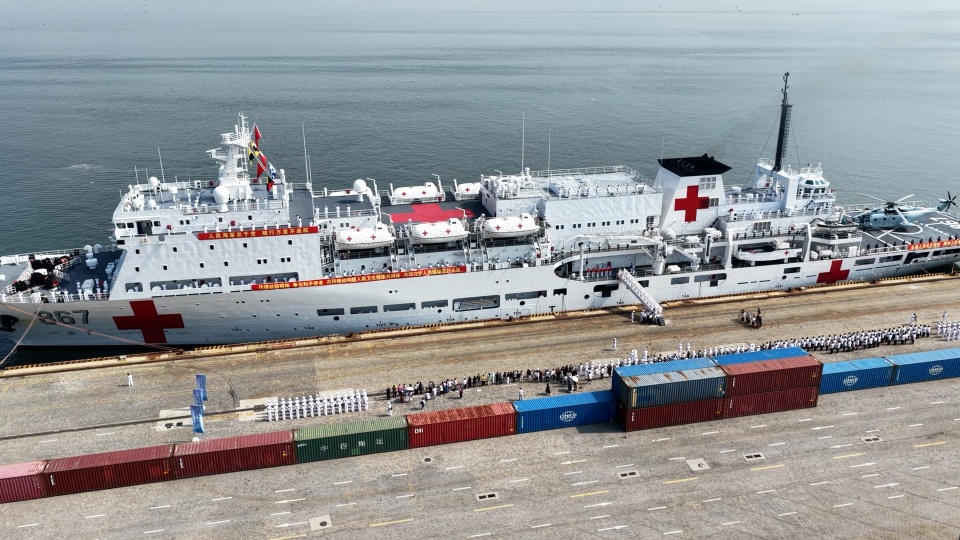By Zheng Cheng
Exercise Talisman Sabre 2025, led by the US and Australia, was held from July 13 to August 4. As a biennial event, this year's iteration stood out for its expanded scale and scope, with significantly increased training content and operational complexity. Against the backdrop of Washington's accelerating push for its so-called Indo-Pacific Strategy, the exercise sent multiple signals and introduced new uncertainties into the regional security dynamics.
Expanded Operational Scope and Strategic Depth. The Exercise Talisman Sabre 2025 set new records in terms of troop size, geographical reach, and international participation. The number of participating countries rose from 13 in the previous exercise to 19. Major naval powers such as the US, Australia, the UK, and Japan dispatched high-profile warships, with the total number of personnel exceeding 35,000. The exercise area stretched from Christmas Island in the Indian Ocean to the Coral Sea off Australia, some 6,500 kilometers away.
In a joint statement, the US and Australia described the Exercise Talisman Sabre 2025 as the largest and most sophisticated warfighting exercise ever conducted in Australia. Notably, the exercise also included participation from several South Pacific island nations and, for the first time, extended operations to the waters off Papua New Guinea. This reflects a broader strategic aim by the US to connect key Indo-Pacific countries, manipulate European allies, and court neutral regional players, ultimately expanding strategic depth beyond the first island chain.
Intelligent Warfare Drills for High-End Conflict. In addition to traditional operations such as field combat, amphibious landings, maritime interdiction, and air and missile defense, this year's exercise introduced new elements focused on cyber warfare and the militarization of artificial intelligence. Participating forces from multiple countries conducted drills simulating offensive and defensive cyber operations targeting enemy command systems, communication networks, and critical infrastructure to enhance cybersecurity capabilities under high-end warfare conditions. In recent years, the US military has intensified development of its Combined Joint All-Domain Command and Control (CJADC2) . This exercise served as a live testbed for that system by simulating and rehearsing scenarios for potential future high-end, intelligent warfare between major powers.
Test-Firing of Typhon for Strategic Deterrence. During the exercise, the US military conducted the first-ever overseas use of the Typhon medium-range missile system to launch Standard Missile-6 (SM-6), which successfully struck a maritime target. This follows the deployment of the Typhon system to the Philippines in April last year, where it has remained stationed. The live-fire testing of the Typhon system marks a significant move in strengthening the US military posture in the Indo-Pacific and will boost the US military's long-range precision strike capability within the first island chain.
Verifying New Concepts to Strengthen Support Systems. To address the US military's logistical shortfalls in the Indo-Pacific region, this exercise specifically included logistics-focused components aimed at enhancing logistics and sustainment capabilities required in high-intensity conflict environments. It also tested and verified new concepts such as the Joint Theater Sustainment Distribution Centers, which is designed to enable effective forward positioning of equipment and supplies in the Pacific theater. According to US plans, the Joint Theater Sustainment Distribution Centers must be capable of accommodating both docking of warships and takeoff and landing of aircraft. It reflects the US military's deep concern over its survivability and sustained combat capability under distributed warfare conditions. By verifying new operational concepts, the US seeks to address existing gaps in its regional logistics and support infrastructure.
The Exercise Talisman Sabre 2025 not only underscores Washington's intent to reinforce its regional military presence and consolidate alliance networks but also signals an accelerated push to prepare for high-end warfare between major powers. Far from being a routine military drill, this exercise, with clearly targeted content, reflects the strategic calculations and a Cold War mindset of the US in regional power competition. As the US and Australia continue to normalize and diversify joint military exercises, tensions in the Indo-Pacific are likely to escalate, posing new risks and challenges to the regional security architecture, which would cause alarm among regional countries.













